
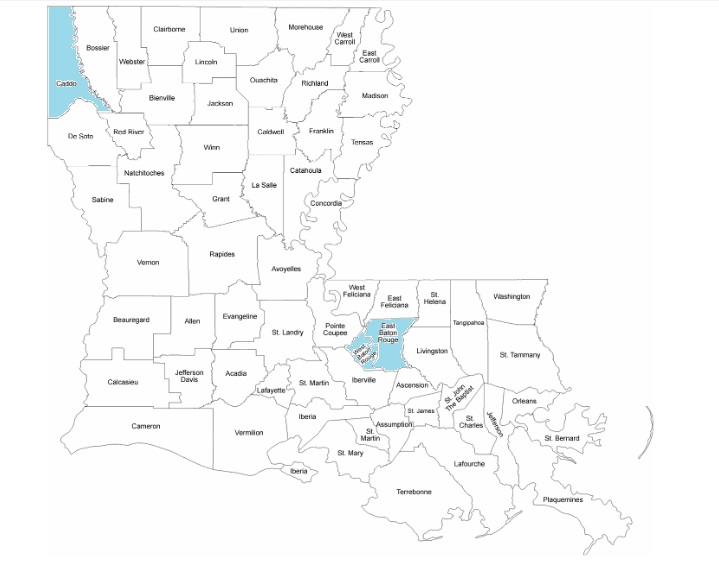
Number of accepted Vaux's Swift records for Louisiana = 19


Four (1939-01) on 15 Feb 1939, East Baton Rouge: Baton Rouge; George H. Lowery Jr. (LSUMZ 2927-2929, 3038).
One female (1939-03) on 14 Oct 1939, East Baton Rouge: Baton Rouge; George H. Lowery, Jr. (LSUMZ 3502).
The above three records represent the first occurrences and only specimens for Louisiana.
Four (1991-076) on 19 December 1991, West Baton Rouge: N edge of Brusly, adjacent to the Mississippi River levee; Donna L. Dittmann and Steven W. Cardiff (ABF card-only).
Two and six (2003-004) on 18 and 20 February 2003,
respectively; East Baton Rouge: Baton Rouge, vicinity of City Park
Lake;
Brian J. O'Shea, Daniel F. Lane (includes sketch), and
George Nixon (ph only).
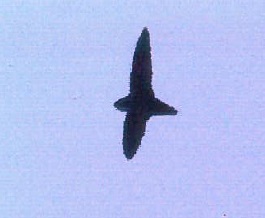

Photo by George Nixon, sketch by Daniel F. Lane
Five to as many as 24 (2004-43) from 12 Feb-31 Mar 2004, East Baton Rouge: Baton Rouge,
University Lakes area;
Donna L. Dittmann and
Steven W. Cardiff,
Rosemary Seidler,
Paul E. Conover
(ph),
Brian J. O'Shea, and
Daniel F. Lane
(ph). On 31 March, seen and heard in
comparison with Chimney Swifts (Donna L. Dittmann, Steven W. Cardiff, Daniel F. Lane). NAB58(2):242 indicates first observed 8 Feb, and NAB58(3):385 indicates last observed 12 Apr; photos (by Lane) inexplicably published
in NAB58(4):544 (nesting season issue).

Photo by Paul Conover
At least eight (2005-041) on 21 December 2005, East Baton Rouge: Baton Rouge, Capitol Lakes,
Erik I. Johnson
(ph).
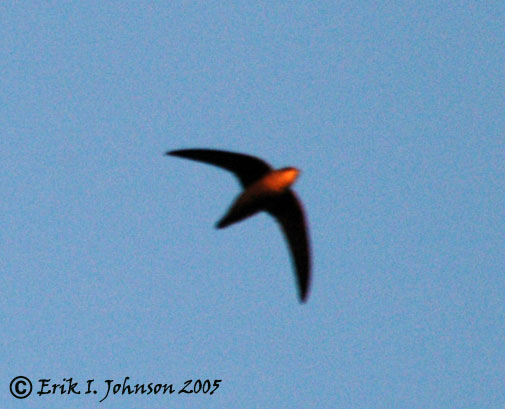
Erik I. Johnson
Seven or eight (2006-017) on 20 February 2006, East Baton Rouge: Baton Rouge, Capitol Lake; Daniel F. Lane.
Six (2008-001) discovered on 2 January and two observed on 4 January 2008, Caddo: Shreveport, C. Bickham
Dickson Park; Matt White (ph) and Hubert C. Hervey.
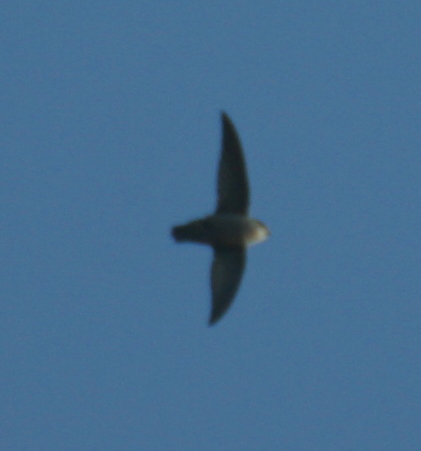
Photo by Matt White
Eight (2008-084) on 24 January 2008, East Baton Rouge: Baton Rouge, City Park Lake; Devin Bosler.
Four (2008-027) on 6 March 2008, East Baton Rouge: Baton Rouge, LSU Aquaculture Research Station, approximately 3 mi. S LSU Campus; Justin Bosler.
One (2014-124) on 14 November 2014, East Baton Rouge: Baton Rouge, University Lakes;
Oscar Johnson (ph).
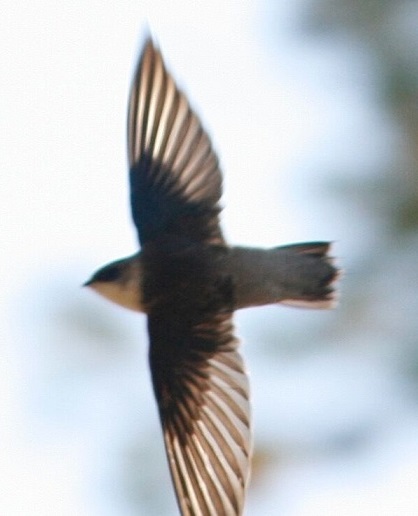
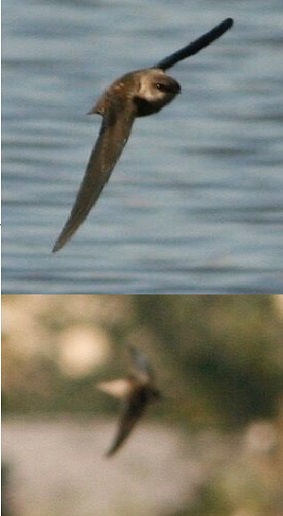
Photos by Oscar Johnson
Up to six (2018-081) on 12 November 2018 to 15 January 2019, East Baton Rouge: Baton Rouge, University
Lakes;
Cameron L. Rutt (ph)
and
Donna L. Dittmann and Steven W. Cardiff
. Photo-documented reports in
eBird to 20 January 2019 (see https://ebird.org/view/checklist/S51878769).
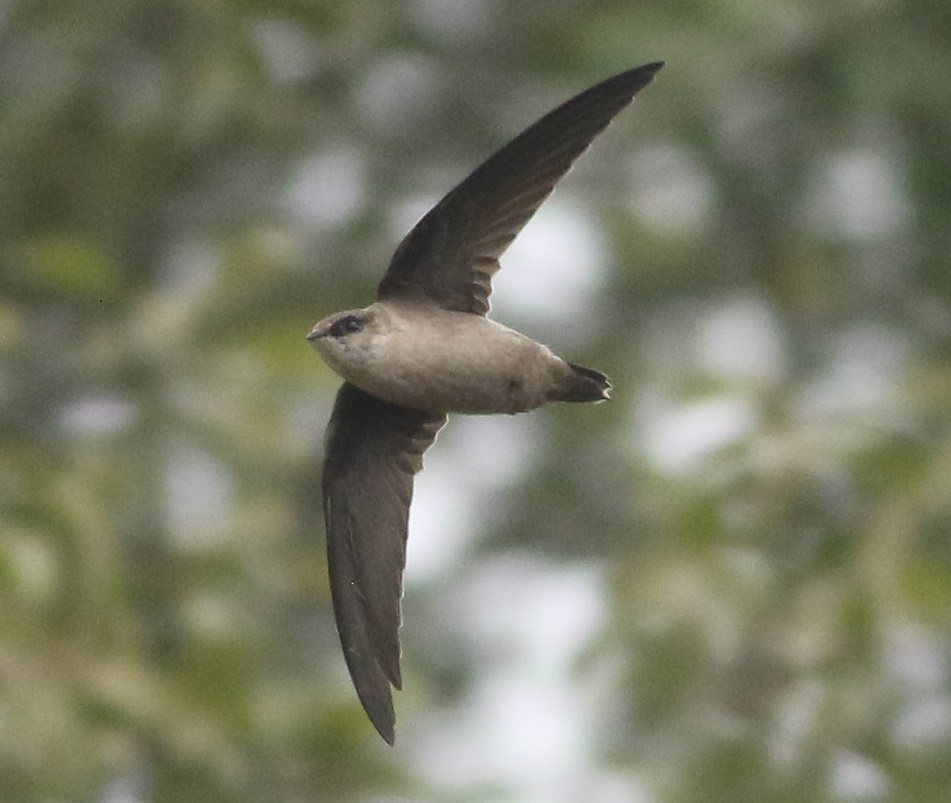
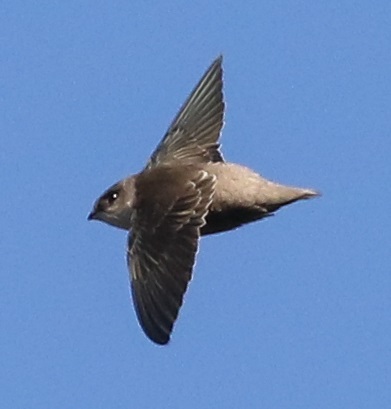
Photos by Cameron L. Rutt
Three (2019-021) on 9 April 2019, East Baton Rouge: Baton Rouge, River Bend at Farr Park; Daniel F. Lane. See also eBird checklist for photo and recording by Marky Mutchler (ph; https://eBird.org/view/checklist/ S54766162.
One (2020-075) on 27 December 2020, East Baton Rouge: Baton Rouge, University Hills neighborhood; Oscar Johnson.
Two initially, then up to to 27 individuals (2020-058) on 15 November-7 December 2020, East Baton Rouge: Baton
Rouge, Capitol Lake; Nick Ramsey, Andrew From (ph; https://ebird.org/checklist/S77058368), and Oscar Johnson (ph;
https://ebird.org/checklist/S76981637). Latest photo in eBird is from 7 December (https://ebird.org/checklist/S77211479).
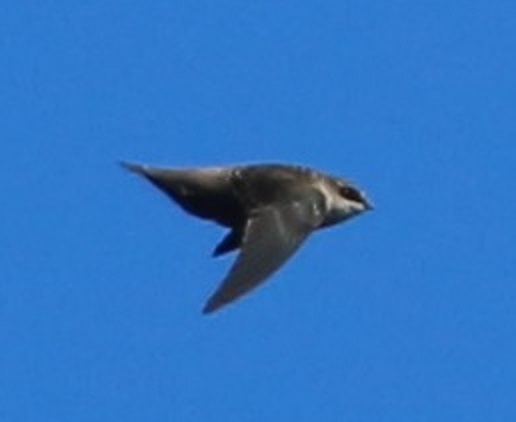
Photo by Oscar Johnson
Up to ten individuals (2020-059) on 16 November 2020-13 February 2021, East Baton Rouge: Baton Rouge, University
and City Park lakes; Matthew L. Brady, Oscar Johnson, Daniel F. Lane (sketch, ph; https://ebird.org/checklist/
S76919062, https://ebird.org/checklist/S78004490, https://ebird.org/checklist/S79277576). Latest photo in eBird is from 13
February 2021 (https://ebird.org/checklist/S81287465).
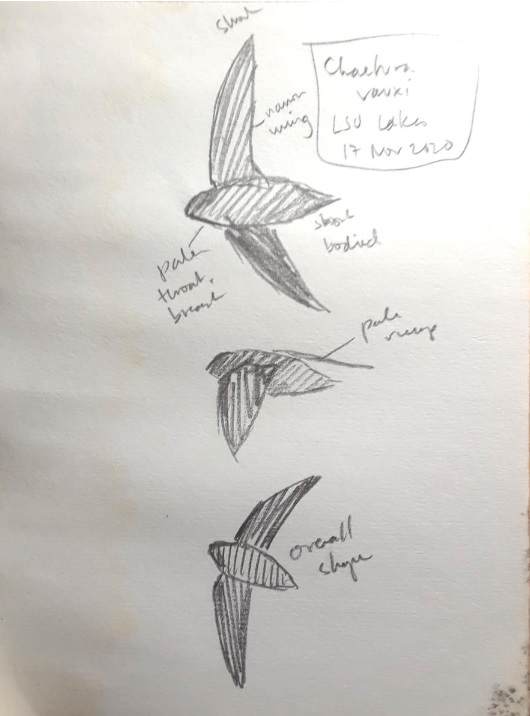
Sketch by Daniel F. Lane
Flock of nine (2020-074) on 13 December 2020, East Baton Rouge: Baton Rouge, Garden District at Olive St. and Park Ave.; Oscar Johnson.
Up to 25 (2021-015) on 12-31 January 2021, East Baton Rouge: Baton Rouge, Pennington Biomedical Research Center;
David Vander Pluym (ph; https://ebird.org/checklist/S80145498). Many additional photos in eBird lists from as early
as 12 January (https://ebird.org/checklist/S79132857) and as late as 31 January (https://ebird.org/checklist/S80216062).

Photo by David Vander Pluym
It is entirely possible that some or all these reports pertain to the same wide-ranging flock of individuals, but the LBRC chose to review based on specific locations rather than lumping into one general record.
One (1982-27) on 29 Dec 1982, Plaquemines: Triumph, Fort Jackson; NAB37(3):310 (record packet also included R. J. Newman�s CBC summary that provides additional supporting, albeit second-hand, details). This report was written and submitted several years after the observation by only one of the observers present that day. The swift did not vocalize and its identification was based primarily on one character (rump color). This record received a split vote with only three members voting to accept the record on the second circulation.
Four (1992-26) on 14 Feb 1992, East Baton Rouge: Baton Rouge, First United Methodist Church, 430 North Boulevard; AB46(2):277 indicates "four unidentified swifts seen throughout the winter at a roost site in E. Baton Rouge." Four swifts were observed at dusk disappearing into the church chimney. The observer heard the birds, but did not elaborate about their calls except noting that they gave a "faint chip." Although presumably Vaux's based on that species' pattern of late winter occurrence, the physical description of the birds and of their call notes were considered inadequate for a diagnostic identification. Although there is no currently accepted winter record of Chimney Swift or other Chaetura swift species, the LBRC continues not to accept winter Chaetura as Vaux's by default in the absence of adequate documentation.
One (1992-58) on 22 Nov 1992, Iberville: a few mi. N of St. Gabriel. This difficult record received split votes through the first three circulations and went to a Discussion vote at a meeting. Although an experienced observer submitted this record, the bird was not photographed, did not call, nor (not surprisingly for the date) could it be compared to other swift species. Therefore, identification criteria were relatively subjective. Members discussed the pattern of records of Vaux's and Chimney swifts, and noted that this record was only marginally outside the late dates for fall occurrence of Chimney Swift. Members discussed the subjective nature of size and wing length, and took into consideration that late fall Chimney Swifts could be completing primary molt and might appear shorter-winged. Some members were also concerned that the description focused more on elimination of Chimney Swift than on what the bird actually looked like. Ultimately, the record was not accepted on a 2-5 vote.
Three (1997-10) on 5 January 1997, East Baton Rouge: Baton Rouge, First Methodist Church at intersection of I-10 and North Blvd. Although most Members believed that this species was most probable due to location and time of the year, no diagnostic characters were provided to support the identification.
Two adults (2000-046) on 31 December 2000, East Baton Rouge: Baton Rouge, south side City Park Lake. This is the only report from this location during the winter of 2000-2001. The identification was based primarily on probability that Vaux�s was the default swift species at this time of the year. The resulting description was relatively superficial and subjective, resulting in a unanimous vote not to accept.
One (2007-004) on 19 January 2007, East Baton Rouge: Baton Rouge, University Lake on E. Lakeshore Dr. Views were distant, and vocalizations were not heard. Although this species is generally considered the "default" winter swift species in Louisiana, a majority of Members considered the documentation too weak for the record to stand on its own and were not willing to automatically accept as Vaux�s based on probability.
One (2008-065) on 15 March 2008, East Baton Rouge: Baton Rouge, Arsenal Park at Capitol Lake. Most Members believed that the description of this single silent swift was not adequate to eliminate an early Chimney Swift.
Four (2009-080) on 15 November 2009, East Baton Rouge: Baton Rouge, 1967 Tulip St. These birds were heard but the observer did not describe what the birds sounded like other than that they �did not sound like Chimney Swift.� All Members believed that this species may likely have been involved based on probability, but supporting details were not adequate for acceptance.
Two (2010-092) on 29 November 2010, East Baton Rouge: Baton Rouge, 1967 Tulip St. These swifts were not heard and no other diagnostic characters were confirmed. Thus, most Members chose not to accept the report.
Two (2011-023) on 5 March 2011, East Baton Rouge: Baton Rouge, 1967 Tulip St. All Members believed the description was not adequate to support identification of these silent swifts.
Two (2011-019) on 21 March 2011, East Baton Rouge: Baton Rouge, City Park Lake. This was a brief description of silent individuals and the observer did not make a sufficient case to eliminate Chimney Swift.
Unknown number ("greater than six"; 2011-069) on multiple dates between 2 March and 13 April 2011, East Baton Rouge: Baton Rouge, Capitol Park <=Capitol Lake/Arsenal Park?> and Spanish Town in vicinity of 770 Lakeland Dr. This record went to a Discussion vote at the 2019 Annual Meeting. Members in favor of the identification emphasized that vocalizations were heard, the birds engaged in flight displays, the observer had previous experience with Vaux�s in the West and at this location during winter, and that Chimney Swifts were present for comparison during some of the observations. Dissenting Members were concerned with the generally poor documentation and superficial description that did not satisfactorily eliminate Chimney Swift. Members also discussed that this would represent the only accepted occurrence for the winter 2010-2011. All Members believed that it was highly likely that Vaux's was involved but, ultimately, half of the Members were not convinced that the report met the threshold for acceptance.
One (2020-091) on 3 November 2020, Orleans: New Orleans, Bayou Sauvage NWR, South Point (ph). Neither the photos nor the description were satisfactory to eliminate Chimney Swift.
One (2022-017) heard-only on 8 January 2022, East Baton Rouge, Baton Rouge, near Mid-City South. Only one series of notes were heard; most Members believed this was not sufficient for acceptance.